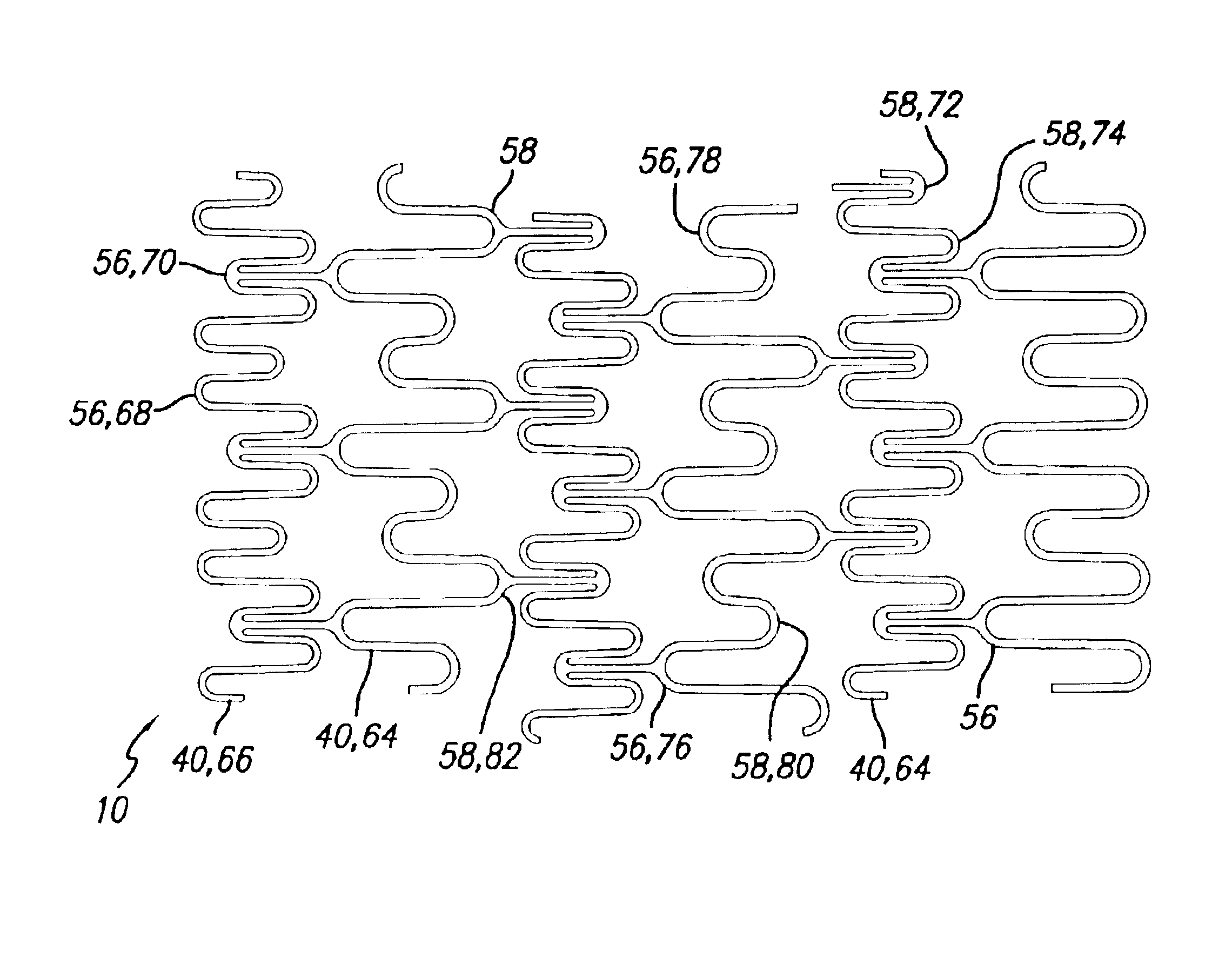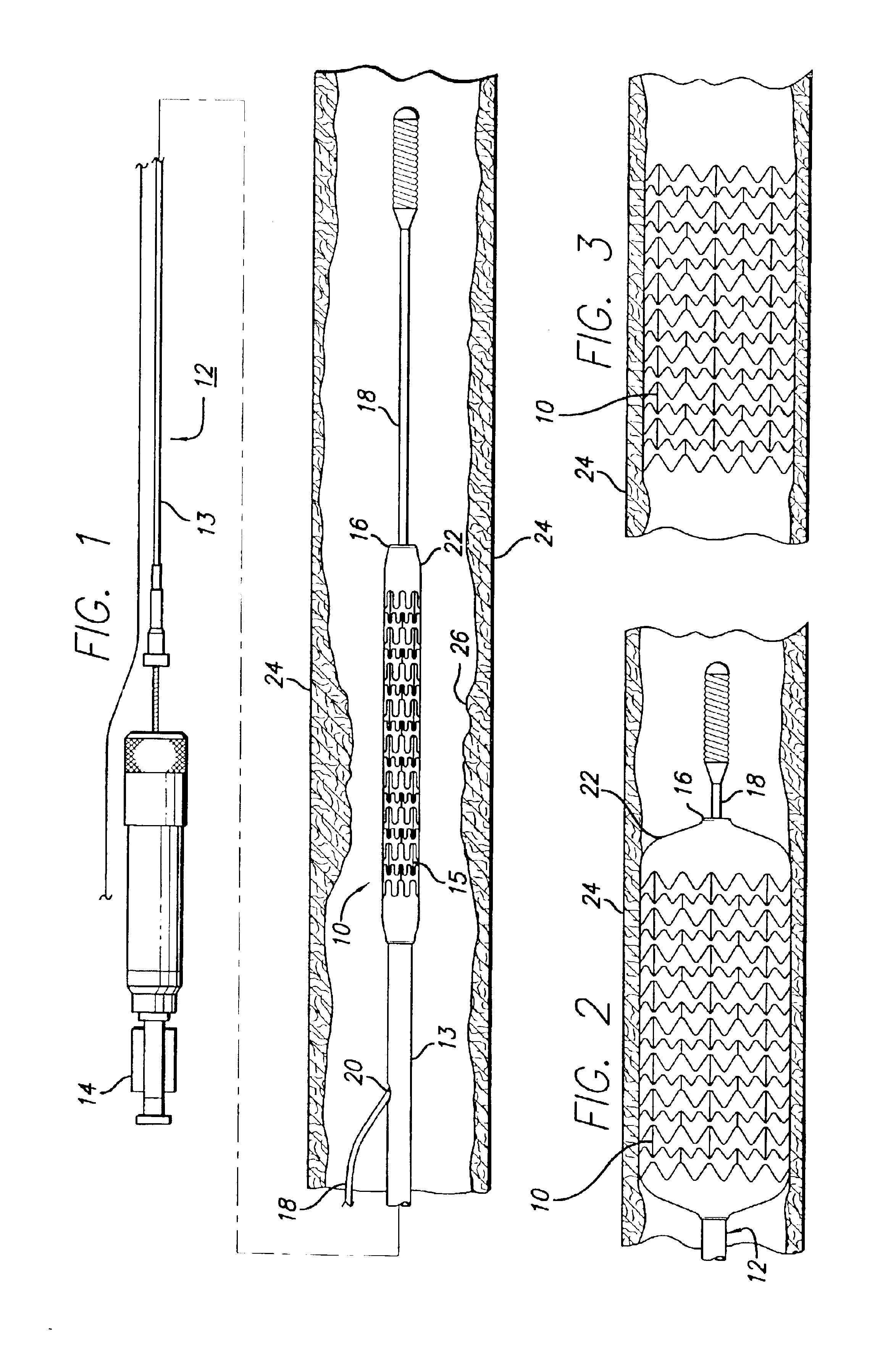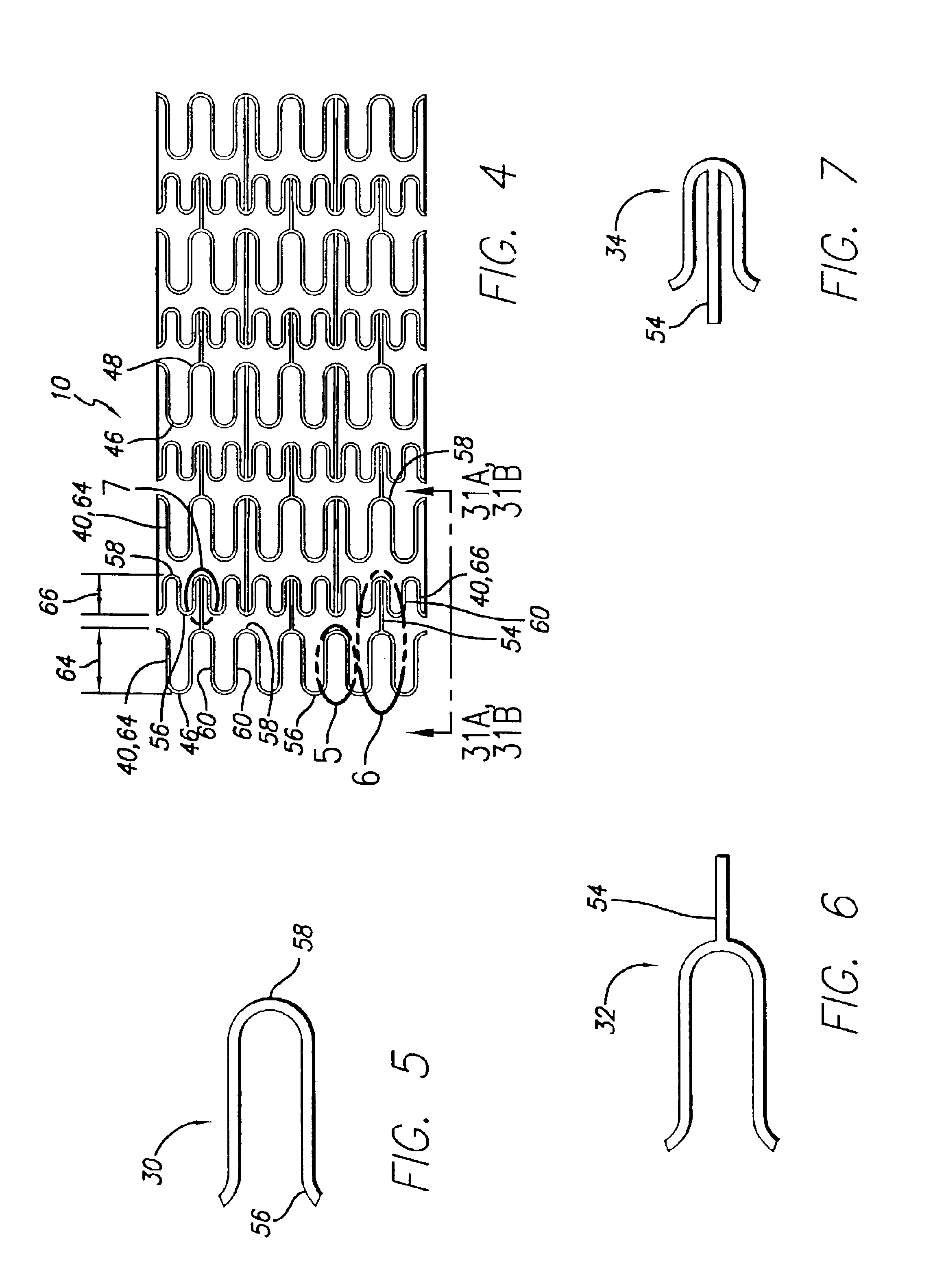Intravascular stent
a stent and vascular technology, applied in the field of vascular repair devices, can solve the problems of stents catching on balloons, contributing to plaque prolapse, low conformability, etc., and achieve the effects of reducing the variation in the length of cylindrical rings, shortening the interval, and improving the conformability of stents
- Summary
- Abstract
- Description
- Claims
- Application Information
AI Technical Summary
Benefits of technology
Problems solved by technology
Method used
Image
Examples
Embodiment Construction
Before describing in detail an exemplary embodiment of a stent in accordance with the present invention, it is instructive to briefly describe a typical stent implantation procedure and the vascular conditions which are typically treated with stents. Turning to the drawings, FIG. 1 depicts stent 10 of the present invention mounted on a catheter assembly 12 which is used to deliver the stent and implant it in a body lumen, such as a coronary artery, peripheral artery, or other vessel or lumen within the body. The catheter assembly includes a catheter shaft 13 which has a first, proximal end 14 and a second, distal end 16. The catheter assembly is configured to advance through the patient's vascular system by advancing over a guide wire 18 by any of the well known methods of an over the wire system (not shown) or a well known rapid exchange catheter system, such as the one shown in FIG. 1.
The catheter assembly 12, as depicted in FIG. 1, is of the well known rapid exchange (RX) type wh...
PUM
 Login to View More
Login to View More Abstract
Description
Claims
Application Information
 Login to View More
Login to View More - R&D
- Intellectual Property
- Life Sciences
- Materials
- Tech Scout
- Unparalleled Data Quality
- Higher Quality Content
- 60% Fewer Hallucinations
Browse by: Latest US Patents, China's latest patents, Technical Efficacy Thesaurus, Application Domain, Technology Topic, Popular Technical Reports.
© 2025 PatSnap. All rights reserved.Legal|Privacy policy|Modern Slavery Act Transparency Statement|Sitemap|About US| Contact US: help@patsnap.com



